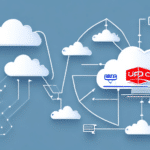Shippo vs Sendcloud: Comprehensive Comparison for Your Shipping Needs
Choosing the right shipping platform is crucial for optimizing your e-commerce operations. Shippo and Sendcloud are two leading options that offer robust features such as label creation and carrier integrations. This comparison delves into their functionalities, pricing, carrier support, and more to help you make an informed decision.
Introduction to Shippo and Sendcloud
Shippo is a versatile shipping platform designed to streamline shipping operations for businesses. It offers essential features like label creation, tracking, and integrations with over 15 carriers, primarily in the US. On the other hand, Sendcloud extends beyond basic shipping functionalities by incorporating order management and returns processing, supporting over 25 carriers with a strong presence in Europe.
Both platforms seamlessly integrate with popular e-commerce platforms, including:
- Shopify
- WooCommerce
- Magento
This integration facilitates the direct connection between your online store and the shipping platform, enhancing efficiency and reducing manual interventions.
Key Differences Between Shippo and Sendcloud
Service Offerings
- Shippo: Specializes in label creation and integrates with a diverse range of carriers, making it ideal for businesses focused on shipping logistics within the US.
- Sendcloud: In addition to label creation, it offers comprehensive order management and returns processing, catering especially to businesses operating in the European market.
Pricing Structures
- Shippo: Utilizes a transaction-based pricing model, charging a fee for each label generated. This can be advantageous for businesses with lower shipping volumes.
- Sendcloud: Offers subscription-based plans with tiered pricing based on monthly shipment volumes, providing cost-efficiency for high-volume shippers.
Customization and Branding
- Shippo: Allows extensive customization, including adding company logos and branding to shipping labels, enhancing brand recognition.
- Sendcloud: Provides streamlined label designs with limited customization options, focusing on ease of use.
Pricing Comparison
Both Shippo and Sendcloud offer free plans with limited features, along with tiered pricing based on shipping volumes. However, Sendcloud's subscription plans tend to be slightly more expensive than Shippo's transaction-based fees.
Despite the higher cost, Sendcloud includes additional features such as multi-carrier shipping and automatic label generation, which can justify the expense for businesses requiring these functionalities. Conversely, Shippo's pricing model is more straightforward and may be more suitable for smaller businesses or those new to shipping platforms.
According to a 2023 Forbes report, businesses utilizing optimized shipping platforms can reduce shipping costs by up to 20%, highlighting the importance of selecting a cost-effective solution.
Shipping Carrier Integrations
Sendcloud boasts extensive carrier coverage in Europe, integrating with major carriers like DHL, DPD, and GLS. In contrast, Shippo offers a broader range of carriers in the US, including USPS, FedEx, UPS, and regional carriers like LaserShip and OnTrac.
For businesses with a global customer base, Shippo's diverse carrier integrations make it a preferable choice, while Sendcloud's strong European focus benefits businesses primarily operating within Europe.
Ease of integration is also a critical factor:
- Sendcloud: Known for its user-friendly setup, allowing businesses to integrate carriers quickly without extensive technical knowledge.
- Shippo: May require more technical expertise for carrier integrations, especially when dealing with multiple carriers.
User Interface and Experience
Both platforms offer intuitive interfaces designed to simplify shipping operations, but they cater to different user preferences:
- Shippo: Provides a customizable interface, allowing users to tailor the experience to their specific needs. However, this flexibility can make the interface seem complex to new users.
- Sendcloud: Features a more streamlined and intuitive interface, making it easier for beginners to navigate and utilize effectively without feeling overwhelmed.
Customer Support
Effective customer support is vital for addressing issues promptly:
- Shippo: Offers email and chat support during business hours, with a reputation for quick response times.
- Sendcloud: Provides phone, email, and chat support, along with a comprehensive knowledge base and community forum. Premium support packages offer 24/7 assistance, enhancing support availability.
According to user reviews on G2, Shippo is praised for its responsive support team, while Sendcloud is lauded for its extensive support resources but may experience variability in response times for complex issues.
Advanced Features
Beyond basic shipping functionalities, both platforms offer advanced features to enhance operational efficiency:
- Shippo:
- Multi-carrier rate shopping to find the most cost-effective shipping options.
- Address validation tools to reduce shipping errors and returned packages.
- Developer-friendly APIs for seamless integration into custom applications.
- Sendcloud:
- Order management and returns processing to streamline post-purchase workflows.
- Shipping rules engine to automate shipping processes based on predefined criteria.
- Integrations with major marketplaces like Amazon and eBay, facilitating broader e-commerce operations.
These advanced features are supported by data from a Business.com review, highlighting how such functionalities can significantly enhance shipping efficiency and accuracy.
Pros and Cons
Shippo
- Pros: Extensive carrier coverage in the US, customizable shipping labels, multi-carrier rate shopping, affordable for high-volume shippers.
- Cons: Can be overwhelming for some users, limited customer support compared to Sendcloud.
Sendcloud
- Pros: Additional features like order management and returns processing, extensive European carrier coverage, intuitive interface.
- Cons: Slightly higher pricing, limited label customization options, variable customer support responsiveness for complex issues.
The decision between Shippo and Sendcloud should be based on your business's geographic focus, shipping volume, and the specific features that align with your operational needs.
Conclusion: Choosing the Right Platform for Your Business
Both Shippo and Sendcloud offer robust solutions for managing shipping operations, each with its unique strengths. When deciding between the two, consider the following factors:
- Geographic Focus: Shippo is ideal for businesses with a strong presence in the US, while Sendcloud excels for those operating in Europe.
- Pricing Structure: Evaluate whether a transaction-based or subscription-based model aligns better with your shipping volume and budget.
- Feature Requirements: Determine if advanced features like order management and returns processing are essential for your operations.
- User Experience: Consider the ease of use and customization options that best fit your team's technical capabilities.
- Customer Support: Assess the level of support you require based on your business's complexity and potential shipping challenges.
By carefully evaluating these aspects, you can select the shipping platform that not only meets your current needs but also scales with your business growth.
For more insights on shipping solutions, refer to industry reports from sources like Shopify and Business News Daily.






















